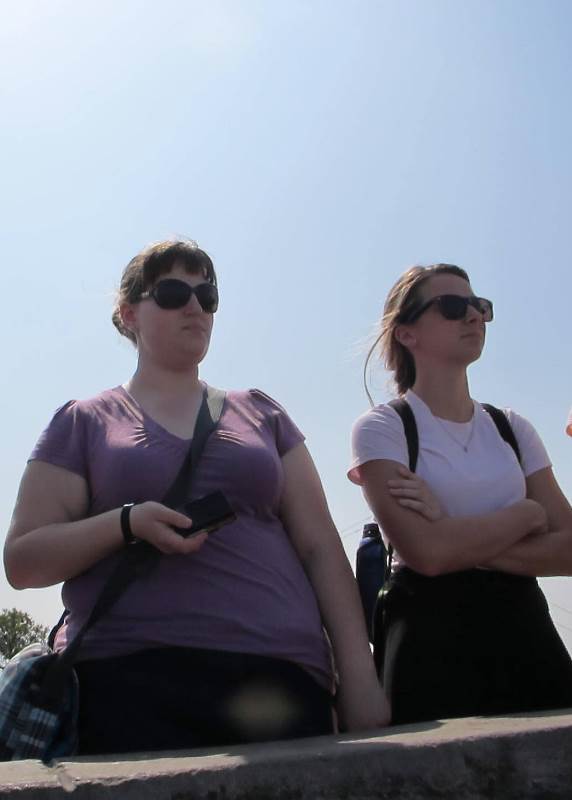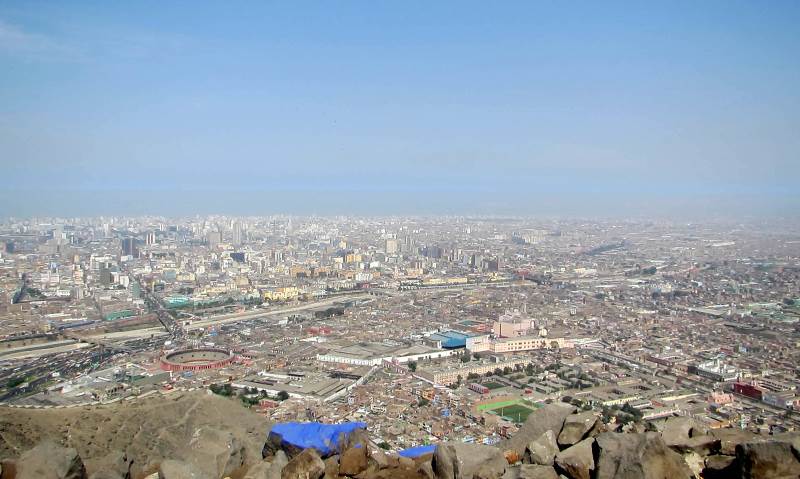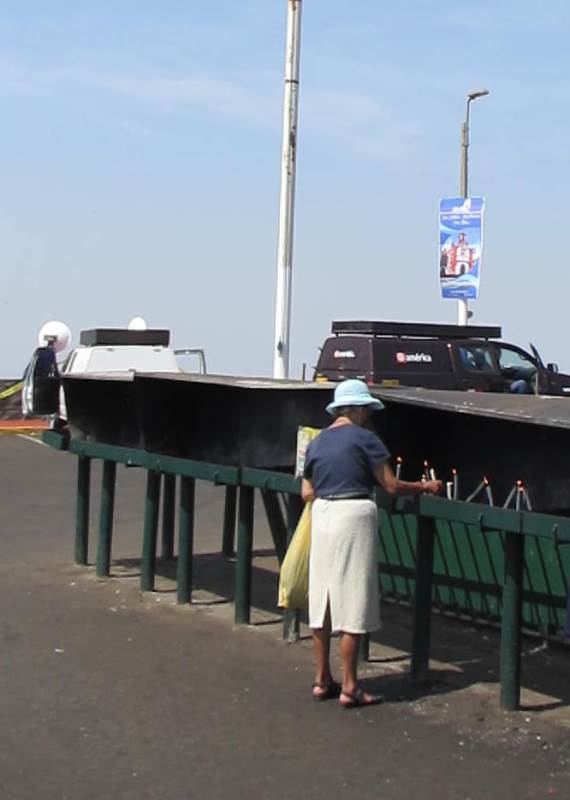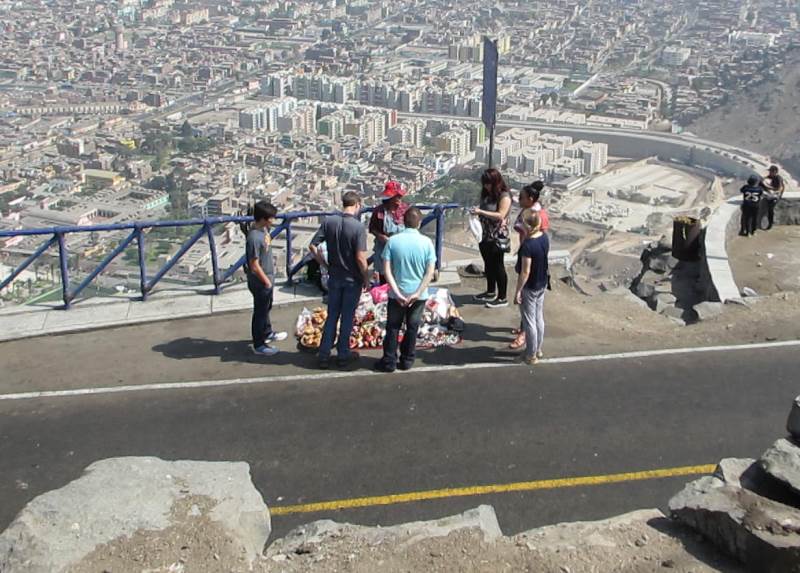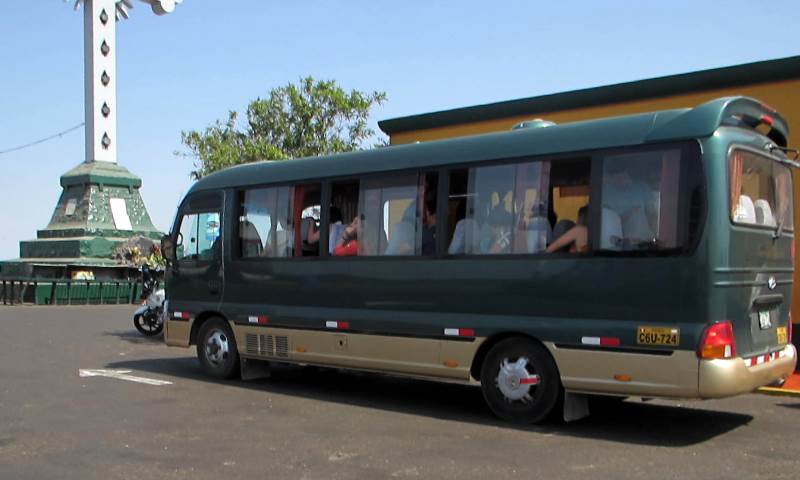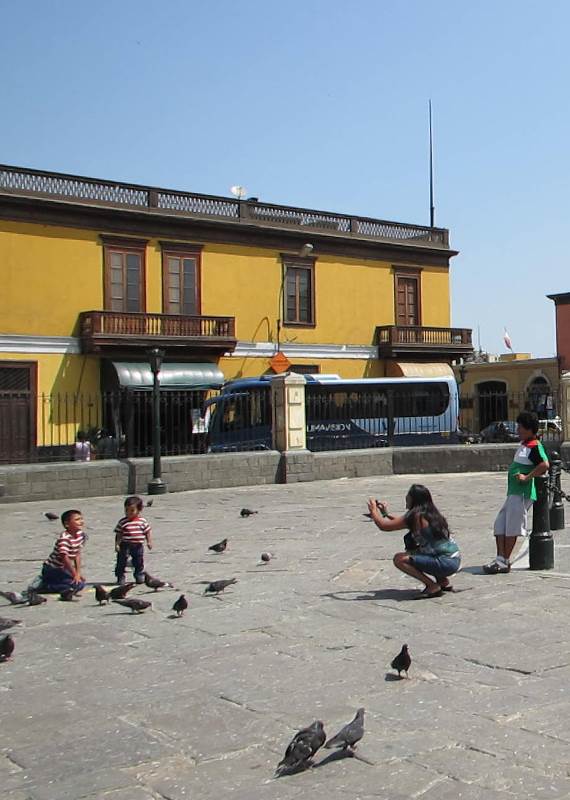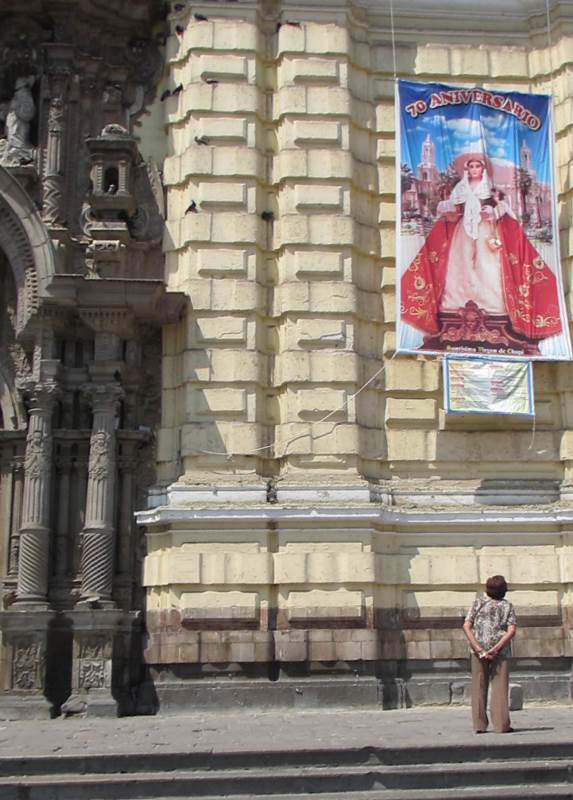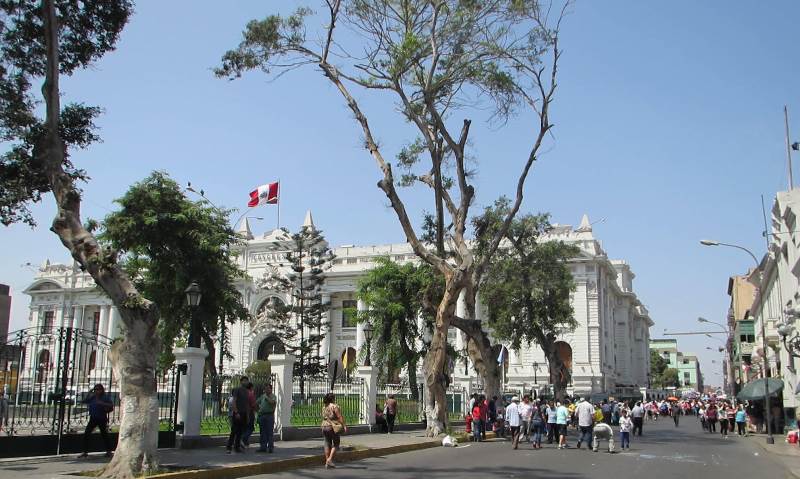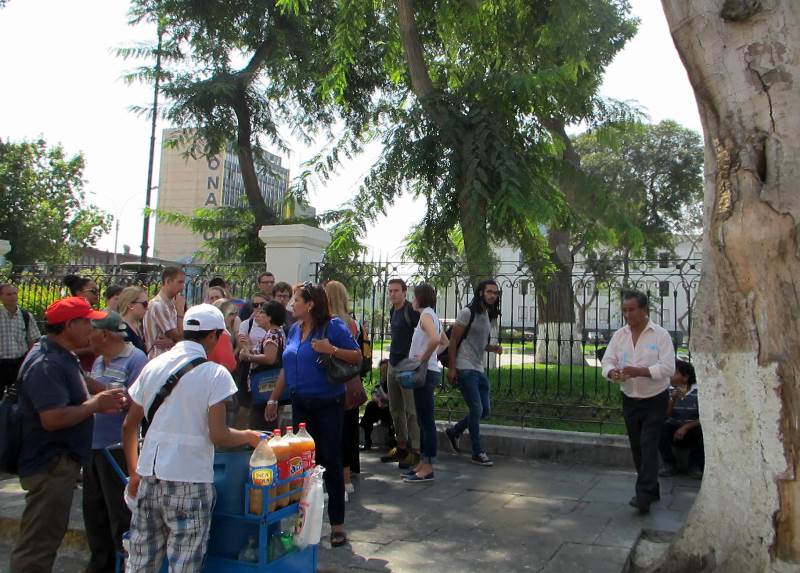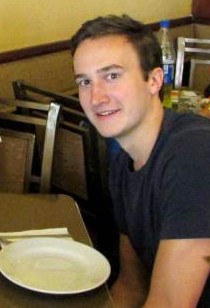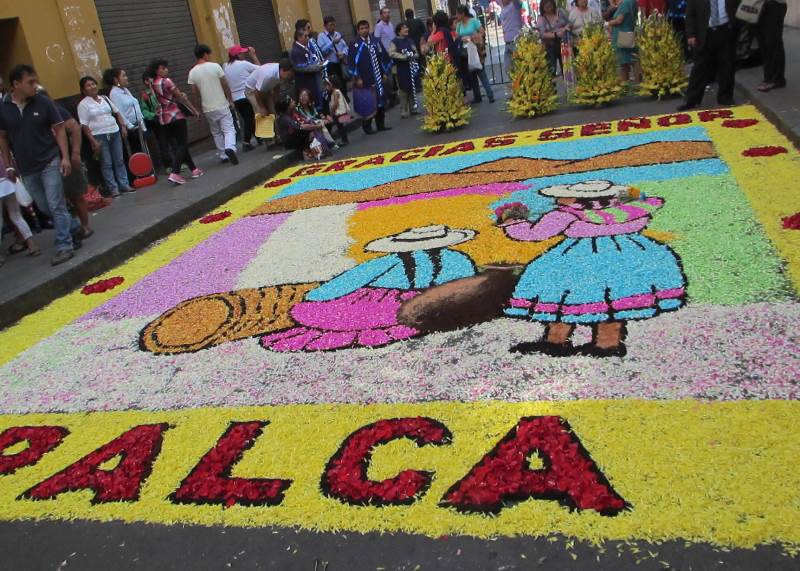Spending the Holiday Downtown
By Karen and Duane Sherer Stoltzfus
Peru SST Co-Directors, 2014-2015
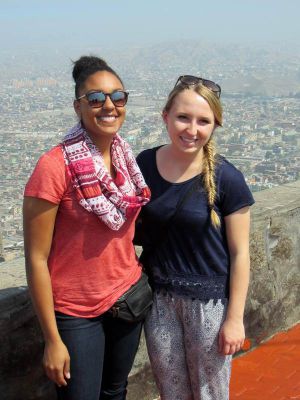
We were a little worried that going downtown on Dia de Trabajo, or Labor Day, would be a disappointment to students if the streets were deserted, leaving us to wander a colonial ghost town on only their second full day in Peru.
As it happened, thousands of people from across Lima chose to spend the holiday just as we did — visiting the Plaza de Armas and walking around the downtown. We had plenty of company.
We started our tour with a visit to Cerro San Cristóbal, the highest hilltop to the northeast of central Lima. Our driver coaxed the bus up the narrow, twisting streets, lightly touching the horn to warn oncoming traffic to stay to the side. The hilltop offers arguably the best views of this sprawling city, including sections of the coastline. The day was unusually clear; we could see islands that are usually blocked by fog or haze. Just before leaving, the students gathered at the foot of the cross, a Lima landmark.
Our next stop was the Iglesia y Convento de San Francisco, known for its religious art above ground and its history below ground.
We admired the courtyard, the wood carvings and the paintings, including “The Last Supper,” by Diego de la Puente, in which a cuy, or guinea pig, is shown on a serving platter. It’s one example of many that we will see of “syncretism,” or ways in which Peruvians blended indigenous beliefs and customs with Catholic practices brought by the Spaniards.
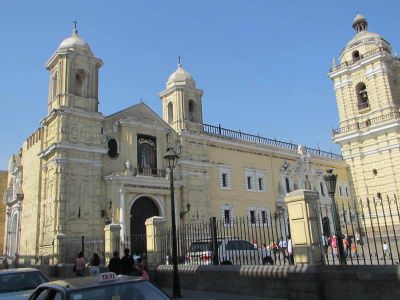
Our guide, with a clear and confident command of English, led us through the bone-filled crypts, with skulls and femurs arranged in concentric circles. The monastery served as a public burial place until 1808. As we moved single file through narrow passageways, we read scriptural reminders posted on the walls, including John 11:25-26, in which Jesus proclaims,“I am the resurrection and the life . . . whoever lives by believing in me will never die.”
We walked to Chinatown, or Barrio Chino, for lunch, arriving before 1 p.m., which normally signals the start of lunch time in Lima. Even so, we filled the last available tables at Ton Kin Sen, a Cantonese restaurant. Chinese restaurants, known as chifas, can be found all across Lima, serving fusion dishes.
On our return to the Plaza de Armas, which is the city’s central plaza, we passed several religious processions, paying homage to saints or other figures of note, and the creation of elaborate flower carpets in the street.
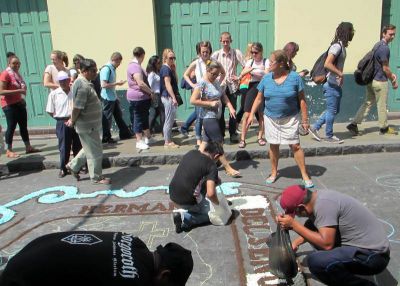
Celia Vásquez, our Lima study coordinator, served as guide for the day. From the Plaza de Armas, for example, she pointed out the Palacio de Gobierno, or Government Palace, which serves as the home of Peru’s president, Ollanta Humala; and the Basilica Cathedral of Lima, where students could attend Mass on Sundays at 11, with the archbishop of Lima, Cardinal Juan Luis Cipriani, presiding.
She also introduced us to the Parque de la Muralla where you can see a set of excavated remains of the city wall (muralla) that surrounded central Lima during the 17th century. Much of the wall was torn down in the 1870’s as the city expanded, but sections of it are visible today in a lovely park along the Rimac River.
We continued our walk along Jirón de la Unión, a pedestrian street that was once one of Lima’s most important boulevards. If you look closely, you can still see many impressive examples of neoclassical and Art Deco architecture, though many of Lima’s older buildings are in need of some tender loving care.
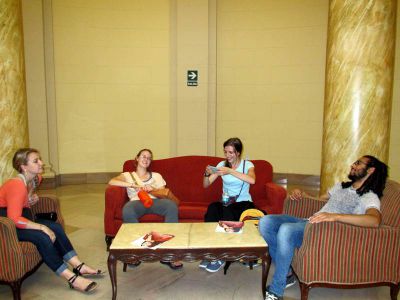
We arrived at Plaza San Martín, Lima’s second most important city square, feeling a bit warm from the autumn sun. Celia led us into the famous Gran Hotel Bolivar, which opened in 1924 in honor of the centenary of the the Battle of Ayacucho (a decisive battle during the Peruvian War of Independence). The elegant lobby of the hotel, the first large, modern hotel to be built in Lima, was the perfect place for us to relax and cool off.
The plaza, inaugurated in July of 1921 to celebrate Peru’s 100th anniversary of independence, is dedicated to General José de San Martín, a key leader for the struggle of independence in South America. The statue in the plaza’s center was designed by Spanish sculptor Mariano Benlliure to show San Martín during his voyage across the Andes. More importantly, people enjoy pointing out that the woman at the base of the monument, who represents liberty, was designed with a llama — the animal — on her head instead of a crown of flames, as the artist intended. One of the Spanish words for flame is llama. The statue is a reminder that our imperfections, whether in art or in language, make the world so much more interesting.



